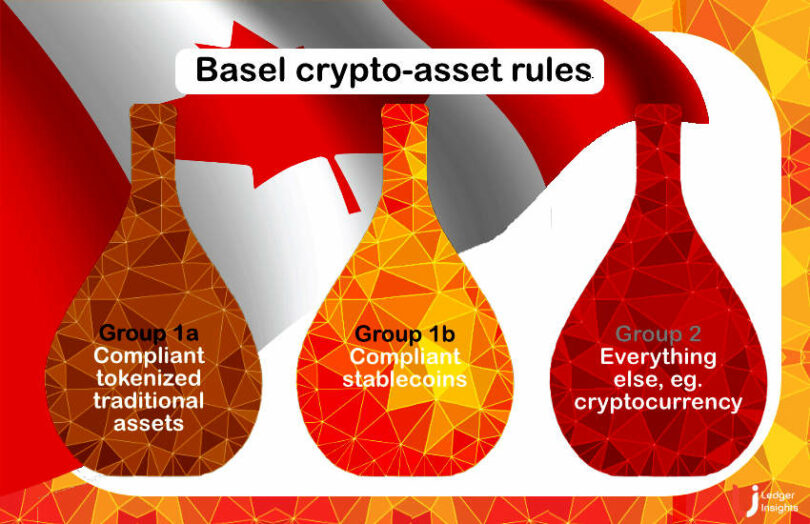Today Canada’s Office of the Superintendent of Financial Institutions (OSFI) published a proposed treatment of bank and insurance crypto-asset holdings. Last December, the Basel Committee published rules for crypto-assets. Some of Canada’s proposals are stricter than Basel’s. The consultation is open until September 20. Final guidelines will be published in March 2024 and come into force in Q1 2025.
In early drafts of the Basel rules, it intended to add a 2.5% risk weighting (RWA) to tokenized securities, which many in the industry referred to as the DLT penalty. Following lobbying from industry bodies, the final proposals dropped the 2.5% and instead said it could be imposed on a case-by-case basis if there are ‘observed weaknesses’.
Canada wants to apply the 2.5% RWA by default, which might be adjusted downwards as industry experience with the technology improves.
More detail re liquidity of tokenized securities
Basel rules for crypto treat the risk weighting for tokenized securities as equivalent to conventional securities in most circumstances. However, there were some unattractive nuances that were buried in the Basel text, which Canada has clarified.
Following the Basel rules, Canada says it will consider the liquidity profile of a token. Today many institutional tokens are issued on permissioned blockchains with few participants. With a lack of current interoperability betweenthe networks and few secondary markets, the tokens are relatively illiquid, resulting in them being classed in the ‘Group 2’ (risky) bucket with a 100% RWA.
However, there are solutions. For example, the SIX Digital Exchange (SDX) in Switzerland issued a digital bond for UBS – the largest institutional digital issuance to date at CHF 375 million. That was possible because any institution could invest, whether or not they were blockchain ready. How did they do that? The SDX (digital) central securities depositary (CSD) was linked to the conventional SIX SIS CSD, so investors could use the usual CSD.
Back to Canada’s proposed rules, it also clarifies the Basel details on collateral. If tokenized securities are to be used as collateral, the collateral needs to be capable of being liquidated in a timely manner. And the volatility in value must be equivalent to the conventional security. Otherwise it won’t qualify as mitigating credit risk.
This note is based on a quick reading of the proposals and might be expanded tomorrow.






